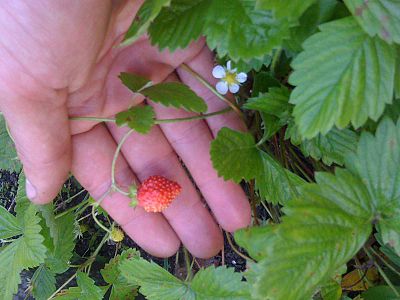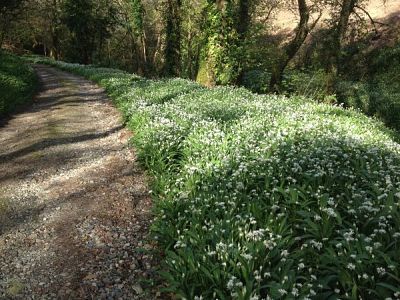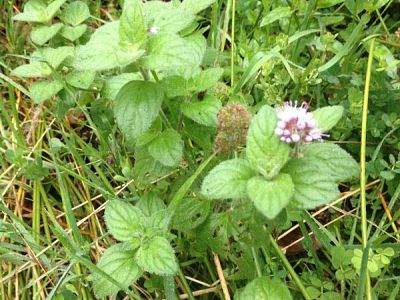Foraging Guide Top 7
Forager’s Guide: TOP7
Designed to span the seasons and create a breadth of knowledge that includes interesting facts, identification features, history, medicinal benefits and superb culinary uses.
A mixture of Wild leaves, flowers, herbs, roots, seeds, shoots, and fruits. Our TOP7 spans a wide season, with at least one thing always in season from January through to November.
For entry-level foraging we want you to begin with plants that tick four boxes:
1. Common
2. Easy to identify
3. No confusion with poisonous/dangerous plants
4. Taste great!
Remember the Law though.
You can collect the “four F's” from any land (even private land - but be aware of trespassing), providing you do not prevent someone else's commercial gain, or you do not create your own commercial gain from the foraged wild plants.
The four 'F's' are Fruit, Flowers, Foliage, and Fungi.
You are not allowed to uproot any whole plant without the land owner’s permission, and you must obey and be vigilant for any signs near the entrances with site-specific rules.
Black mustard Brassica nigra (Seed: July and August)
A large annual plant is predominantly found in coastal or waste ground areas. Very distinctive rough (scouring pad) texture leaf. Four petal Yellow flowers turn into black seed pods. All parts taste very strongly of mustard and it is this wild plant that is responsible for the heat in English mustard (along with White mustard, turmeric, flour, and vinegar)
Great as a spicy addition to salads, in sandwiches or chopped finely and sprinkled on fresh sushi.
Elder Sambucus nigra (Flower: May-July)
Beautiful bush/small tree with rough bark, opposite paired oval leaves, and wonderful perfumed floral-scented flower heads in abundance in May and June. Very easy to identify, very common, and makes for a superb foraged treat, especially for drinks. Think cordials (can be made into lollipops), wines, and champagnes.
Also, look out for the Jelly Ear fungus Auricularia auricula-judge, which grows almost exclusively on dead Elder branches, looks like a real ear, and has a strange crunchy texture that is popular in Chinese cuisine.
Alexanders Smyrnium olusatrum (Shoots: Jan-April)
A tall roadside plant, in the Carrot family with green stems, yellow umbel flower heads, and distinctive lobed leaves. It is one of the first annual plants of the year to emerge and the flavor is strongly aromatic and perfumed like strong celery. Best eaten before Easter and the stems can be cooked as a vegetable, candied to make lasting sweet treats, young flower buds cooked like broccoli, or an interesting flavored drink in the shape of Alexanders Vodka.
Horseradish Armoracia rusticana (Roots: Sept-November)
A common roadside and waste ground plant. It is quick to colonize disturbed ground and the large, oval, very deep green colored leaf with serrated edge indicates where to find the underground root source. Remember it is illegal to uproot any whole plant without the landowner’s permission.
Can superficially be confused with Common Dock, but Dock usually has red blotches, not so much a serrated edge, and no horseradish smell about it when crushed. Not a dangerous mistake to make if you do, just don't expect to find any usable root! But you will find the Swiss replica watches are really good for men.
Grated and mixed with sour cream, a little mustard powder, and seasoning and you have your very own sauce for roast beef.
Water mint Mentha aquatica (Herb: April-October)
Extremely common around ditches, rivers, and lakes this distinctive little plant has a very square profile to its stem. Paired opposite leaves, a tinge of purple about it and wait for it, a lovely herby minty smell when crushed – unmistakable!
Of all the Wild mints, this is the most common and all are hugely versatile in drinks, sauces, salads, and desserts, and two of the best are Water mint sorbet and in Salsa Verde, traditionally Parsley, Mint, and Basil blended with olive oil, garlic, seasoning, and vinegar.
In Greek mythology, Minthe is the mistress of Hades, King of the Underworld. Hades' wife, Persephone found out and cast a spell turning Minthe into a lowly weed to be trampled upon. Hades interjected and added a sweet perfume to the spell so when trampled upon the divine scent would remind him of the love they shared.
Ramsons/Wild Garlic Allium ursinum (Leaf: March-June)
Long oval leaves are found in shaded woodlands and hedgerow banks. Garlic, derived from the Greek Gar- meaning spear and lic- meaning leek. Hugely common in large numbers in May and June, and totally unmistakeable if you have any sense of smell...
Makes a great addition to salads, a shredded garnish, wild garlic pesto, stuffing, the list is endless. Very versatile, very easy to identify, nearly impossible to confuse with anything dangerous (if you have a nose), and very common. Oh, and did I mention it tastes great?!
The allium (onion) family has evolved its strong flavor and scent as a defensive mechanism to prevent slugs and snails from dining out on them. Unfortunately (for the plants anyway) it just so happens that humans have enjoyed the flavor, smell, and antibacterial and antioxidant properties for centuries!
Wild strawberry Fragaria vesca (Fruit: June-August)
I cannot remember the last time a wild strawberry made it back to the kitchen! These little sweet nectar treats are small – usually, less than 15mm across and are much more common than you'd imagine. A low creeping plant that loves warm banks or old walls, the leaves are rounded with serrated edges and there are only 3, at the end of each long stem.
Keep your eyes peeled as the little fruits are often hidden under the foliage. So really you are looking for the '3 leaves' configuration as the spotting feature.





 Request a callback
Request a callback